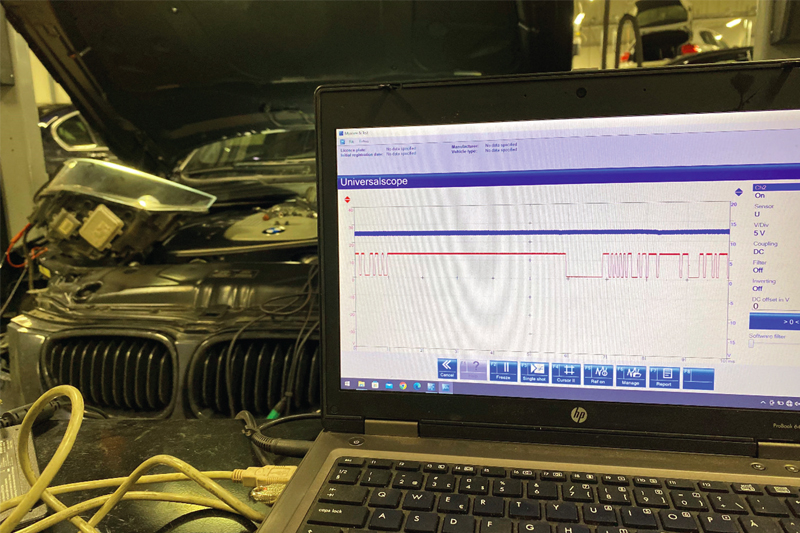
Diagnostics expert Ben Johnson investigates a recent headlamp failure on a BMW E60.
It would be fair to state that, at Schmiedmann, we tend to get our share of BMW Exx generation vehicles of which some are, by now, nearly 20 years old. Most of them have fared well during this long time with only the odd sensor failure, corrosion or part needing to be replaced. In general, they are a fairly hardy vehicle if looked after, well made and easy to work on even if, every now and then, they tend to suffer issues such as the well reported and dreaded battery drain problems that can be tricky to narrow down, even with the proprietary software, ISTA.
Confirming the fault
So, it was good news for me that this example came with what was assumed to be a xenon ballast module failure and not intermittent battery draining! During the customer interview he mentioned that a warning lamp illuminated with subsequent right headlamp shut down completely. The fault was confirmed both visually and by observing an active CC message (check control) that was present in both the Kombi and the CID. Kombi, for those unfamiliar with BMW terminology, refers to the instrument cluster and the CID refers to the central information display which is the screen displaying radio, menu functions and satellite navigation that sits in the centre of the dash above the radio and heater controls.
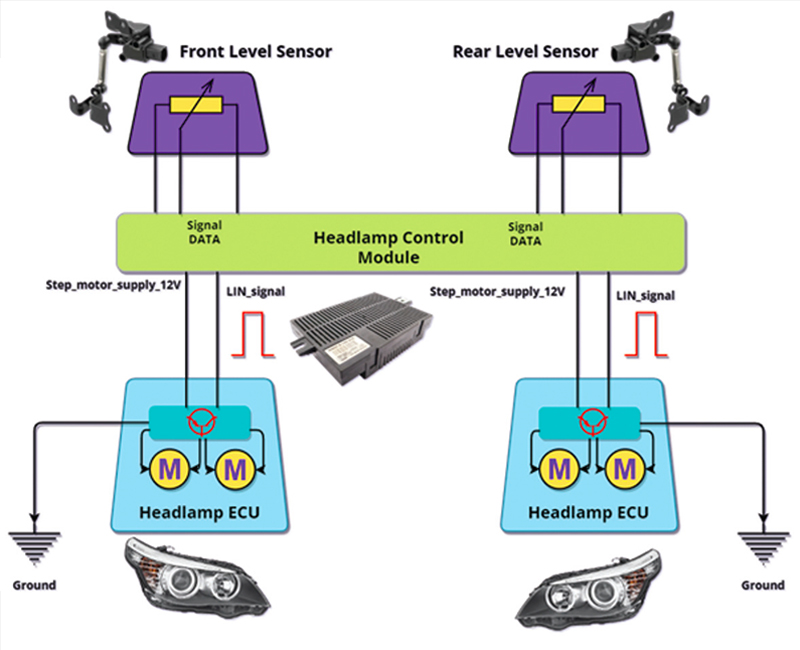
This lighting design features a lighting module (LM) that utilises a 19.2 baud single wire system to communicate with an SMC module inside the headlamp. The SMC module is responsible for actuating the stepper motors that alter the headlamp beam angle. The SMC module according to the wiring diagram is referred to as “headlamp ECU” for simplicity and the LM is referred to as “headlamp control module”.
As is customary when looking at problems that need to be solved, sticking to a rigid test plan is not something that I am inclined towards as it tends to prevent the free thinking and dynamic deductive reasoning that have become a habit of mine. After so many years fault finding, it becomes almost second nature to “feel” what is happening or, as in this case, not happening. From the stored fault codes (006140 LM: communication with SMC, right, disrupted), it was determined that the issue was possibly a non-comms event between the headlamp on the right side and the headlamp control module which is situated in the pedal box area. The SMC module in the headlamp came to mind at first since they can fill with water and corrode the circuit boards. Looking at the physical position of the right headlamp it was determined that it was pointing far too high. Sometimes the headlamp control unit can receive information via the headlamp swivel module position sensors feedback from the SMC module on the LIN if the swivel motor, for example, had failed thus leaving this headlamp position too high. In such a situation, as a result of this undesirable positioning, the headlamp module switches off the xenon lamp completely. This is done to avoid dazzling oncoming traffic. In this particular case, however, the fault code related to a loss of communication between the headlamp and the headlamp module and not of a swivel motor failure though the result was similar: Switching off the headlamp completely.
Smart beginnings
I find that it pays dividends in terms of timesaving to decide upon the best area in which to start to find some evidence as to the root cause of the fault. The headlamp control unit was clearly the smart choice as it required only a few screws and the lower panel removing under the steering wheel. What I was aiming for was to take a reading of the voltage on the LIN bus and compare it to the working side which happened to be the left side on this vehicle since the functional description didn’t include what precisely the LIN voltage should be.
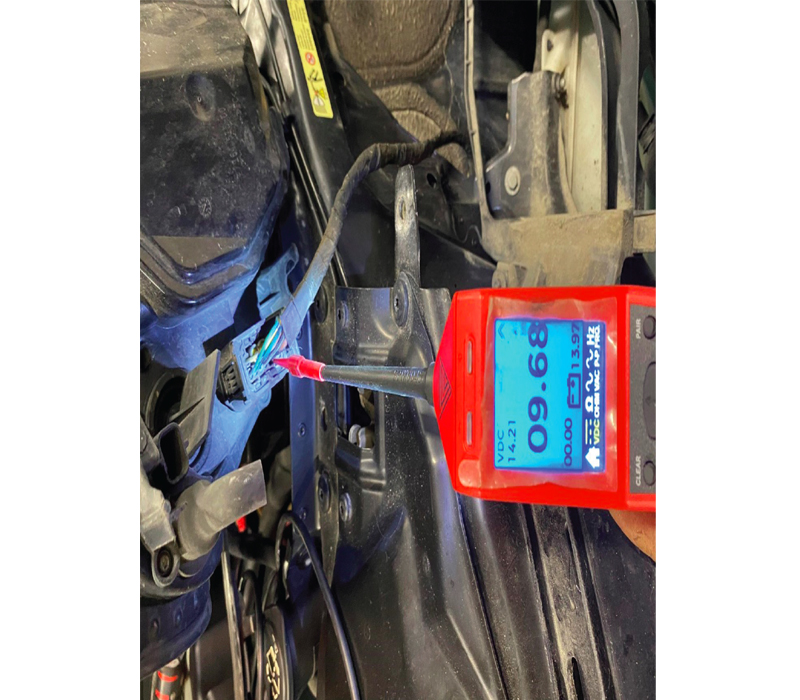
Checking the left output from the headlamp showed a LIN operating at around 9.68 V with a 14 V battery support connected. In contrast to this, the right headlamp displayed a voltage of 10.89 V with battery support temporarily removed during testing as it was a little awkward to leave in place with the removed headlamp in the way. The battery was somewhat worn so the overall battery voltage was lower than 12 V. Of course, LIN voltage is not static but there shouldn’t be such a large difference between sides. With the battery support re-connected, the LIN voltage increased to over 12 V on the affected (faulty) headlamp. The amount measured at the headlamp control module inside the car was almost the same value as at the headlamp.
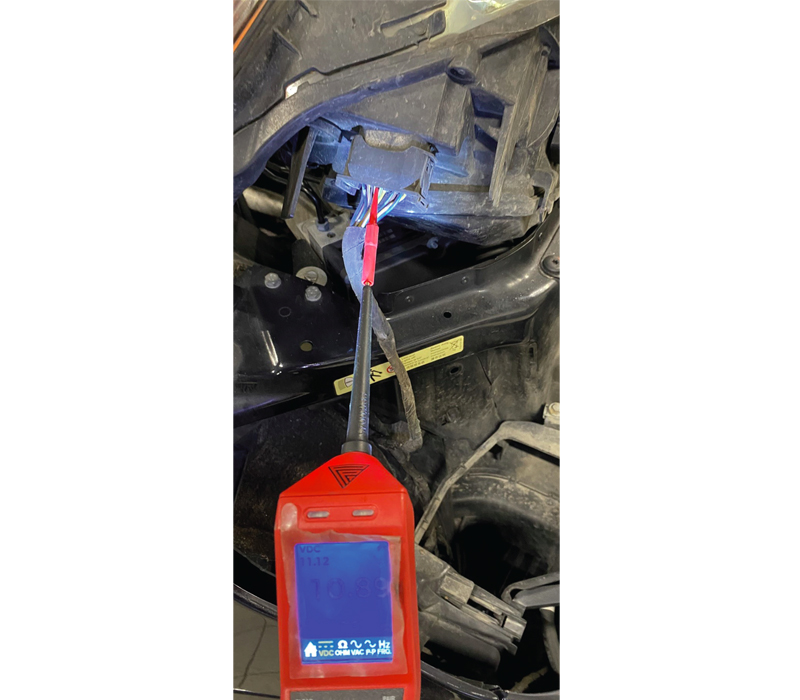
It seemed pretty obvious to me that there was a dominant voltage on the right LIN line which meant that I could be dealing with either a short to 12 V inside the headlamp control unit, internal failure/short to power of the left headlamp module SMC or the line itself had chafed and shorted to power somewhere. Finding the exact problem area would be a case of disconnecting the wire and checking for continuity to 12 V. If this was confirmed, a further evaluation on the wire would be carried out using a voltage drop technique and/or making some strategic cuts in the harness which would separate a portion of the wire from the 12 V short to determine the affected area.
The customer, on a budget, decided that he would simply only like a new wire running in. “As cheap as possible,” were the exact words of the customer. This is something that I always try to avoid since there could be a raft of other wires in a similar condition so it is always best practice, where practicable, to find the actual break. However, it is the customer who pays us and I can only do what they are willing to pay to do in these cases unless a requirement breaches safety protocols such as with restraint systems bypassing etc. Those, clearly, are things I will not carry out.

With an obvious issue in the LIN line, I decided to use the scope to see the signal, or lack thereof. Hooking up the AVL Di-Test 2 channel scope revealed a nice LIN signal on the left working headlamp (the red trace shown in Fig.4) and, as suspected, dominant battery voltage with no signal on the right headlamp shown here as the blue trace.
The solution
The issue of deciding whether the issue was with the wire, headlamp control unit or the headlamp electronics itself was straightforward. The headlamp LIN was disconnected from the left headlamp and the pin output from the headlamp control unit was similarly disconnected. A straightforward measurement with the power probe maestro was taken that showed that the voltage on a disconnected wire was above 12 V. Continuity testing to 12 V with the fluke would achieve the same results.
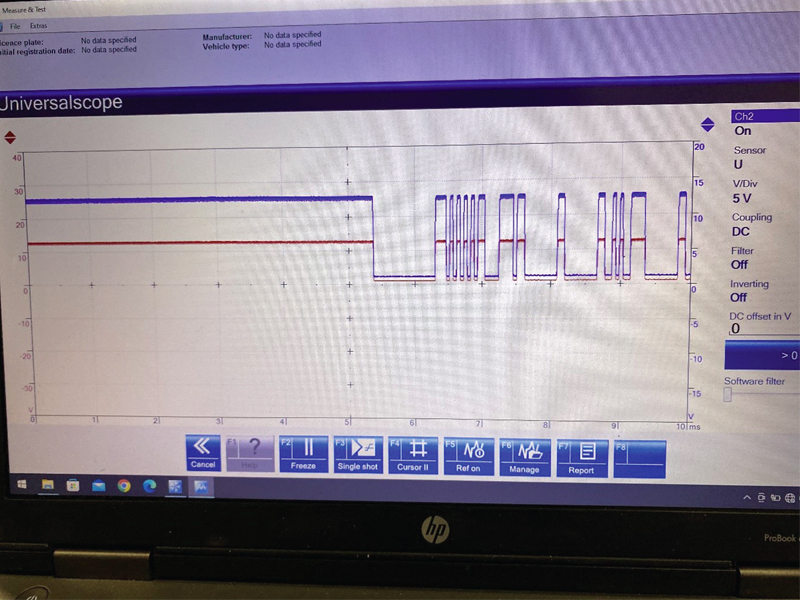
All that remained was to run a temporary wire from the removed wire receptacle of the headlamp control unit to the disconnected headlamp module LIN connector. The result was immediate: the headlamp lit up and the swivel function of the adaptive lights moved when the steering wheel was rotated.
All that remained was to make the bypassed wiring harness good, cap off the dead wire, adjust the headlamps, erase the fault codes and carry out a function test. I would have liked to have been given permission to strip the harness and find the exact break or chafe but this would have cost a lot more and not everyone has the money to pay for extra time. Customer perception can be a difficult thing to overcome and we must do our best to do the job the way that we all would like to do where possible, customer permission willing.









